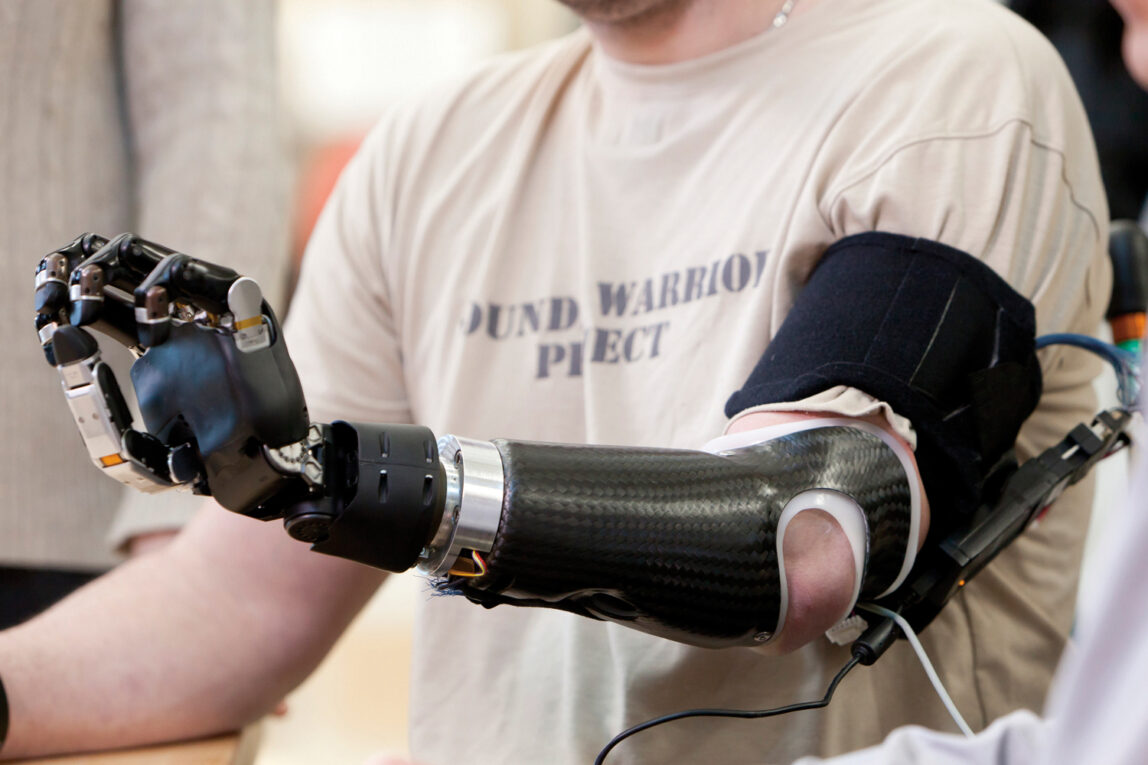The field of bionic prosthetics has rapidly advanced over the past few decades, allowing those with limb loss to regain impressive mobility and functionality. With continued research and development, bionic prosthetics are becoming more sophisticated, offering unprecedented capabilities that go beyond merely replacing a missing limb. This emerging technology holds promise to not just restore abilities, but to enhance them – effectively giving some individuals superhuman strengths. In this article, we will explore the state of Bionic Prosthetics today and how they are pushing the boundaries of what’s possible for both rehabilitation and augmentation of human performance.
Mechanical to Myoelectric Prosthetics
Early prosthetic limbs were purely mechanical, with limited functionality. They would allow basic motion like grasping or standing, but had no sensing capabilities. Over time, engineers incorporated electromyography (EMG) technology that detects electric signals in muscles. Known as myoelectric prosthetics, these devices respond to the user’s own muscle contractions. By picking up on signals from residual limb muscles, myoelectric prosthetics can be intuitively controlled through thoughts of motion. This major advancement gave prosthetic users a new level of independence and closer replication of natural limb movement.
Myoelectric limbs became much more dexterous compared to mechanical models, allowing multiple grip patterns and individual finger motions. Advanced pattern recognition controls further streamlined operations by mapping unique muscle signal patterns to specific hand motions. A recent clinical trial found pattern recognition myoelectrics surpassed conventional proportional controls in speed and accuracy for complex motions like typing. As sensors and computational power improved, myoelectric prosthetics took a giant leap forward to becoming almost indistinguishable from biological limbs in terms of functionality.
Toward Sensory Feedback
While modern myoelectrics restored impressive motor function, one key aspect was still missing – sensory perception. Researchers acknowledged that feedback from touch and limb position plays a crucial role in motor control. Without feedback, prosthetic users had to rely on visual cues rather than intuitive “feel.” Several startup companies are aggressively pursuing sensory capabilities by developing prosthetic hands embedded with pressure sensors and advanced neural interfaces.
One approach involves implanting arrays of microelectrodes on residual nerves in the limb. By recording neural signals associated with phantom tactile sensation, researchers discovered they could overlay sensory feedback onto the electrodes, effectively letting the brain “feel” again what the prosthetic hand was touching. Early clinical studies found patients rapidly adapted to this feedback, smoothly incorporating the artificial limb into their body schema within minutes.
Other methods forego implants and instead place tactile sensors on the prosthetic fingertips. When touched, pressure data is transmitted wirelessly to an electrode-packed sleeve worn on the residual limb, stimulating nerves to induce natural sensations of touch, pressure, and limb position. Early tests show sensory feedback dramatically improves prosthetic dexterity, as users can precisely modulate grip forces relying less on vision. As interfaces continue enhancing and neural decoding algorithms improve, bionic limbs may achieve fully sensory-motor parity with biological limbs within our lifetimes.
Performance Augmentation
While rehabilitation remains the primary focus, researchers are also exploring how bionic technology could augment existing human capabilities rather than just replacing missing abilities. Powered exoskeletons provide examples of assisted strength and endurance, but prosthetics may achieve true performance increases beyond normal human limits.
One provocative concept involves developing prosthetic limbs with embedded actuators and motors providing superhuman levels of strength, speed, or endurance compared to biological equivalents. Through neural interfaces, such “enhanced” limbs could seamlessly integrate into the user’s motor cortex – allowing individuals to choose between using normal strength for everyday tasks versus flipping a “boost” switch for extreme physical feats. However, scaling hardware to biomechanical torque/power ratios poses immense technical challenges as forces generated must not damage residual biological tissue.
Another approach integrates not just motor assistance but high-density matrices of sensory arrays exponentially increasing users’ tactile resolution beyond normal human limits. Some envision such hyper-sensitive artificial fingertips, palms or entire hands providing abilities like finely detailed texture or shape recognition that enhance expertise in areas like surgery or craftwork. Though introducing entirely new sensory modalities risks overwhelming the brain’s processing capacities if not properly mapped and interpreted.
Ethical Considerations
As bionic limbs progress toward providing not just replacement functions but superhuman upgrades, a host of ethical issues will need addressing. For enhanced individuals, ensuring parity of access becomes paramount to avoid exacerbating social inequities or hierarchies based on modification status. Conferring significant physical advantages raises questions of fair competition in sports as well as changing human-machine relationships and identity. Societal attitudes toward neurological enhancement are complex, and research should carefully weigh risks of normalization versus enabling. Done prudently and for rehabilitation over military applications, bionics holds great potential to empower individuals while pushing human science forward through collaboration between disciplines. With open and balanced dialogue, enhancement can progress in an ethically responsible manner respecting individual autonomy and social interests.
Bionic prosthetics have revolutionized rehabilitation by restoring natural form and function far beyond early basic mechanical devices. By incorporating electromyography, advanced pattern recognition controls, and emerging sensory interfaces, modern myoelectric limbs restore mobility and independence for those with limb loss. Looking ahead, these technologies may yield superhuman augmentation – from enhanced physical strength and endurance to hypersensitive artificial perception unlocking new expertise. Though scaling challenges remain, interfacing man with machine at a neural level brings the possibility of seamlessly integrating prosthetics not just as replacements, but as upgrades redefining normal human abilities. With rigorous safety testing and open societal discussion, bionics holds promise to empower individuals while pushing forward the boundaries of rehabilitation and performance.
*Note:
1. Source: Coherent Market Insights, Public sources, Desk research
2. We have leveraged AI tools to mine information and compile it

